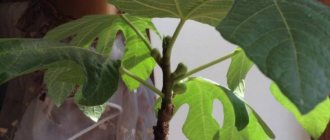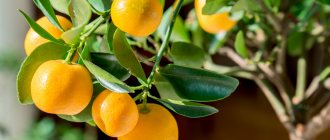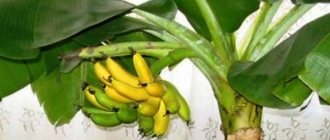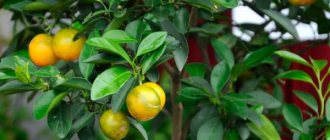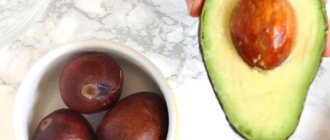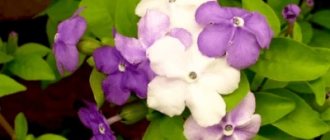The best way is to plant deep in trenches.
They need to be dug in such a way that the depth is at least half a meter and the width is about a meter. If the soil is loamy, it is better to pour a drainage layer of sand and fine gravel onto the bottom.
For the substrate, surface soil is mixed with humus, manure and compost, and then poured into the planting hole.
After this, small mounds are poured onto which the seedlings will be placed. To do this, the roots are straightened, and the seedlings are covered with earth, holding the stems to the level of the root collar.
For the substrate, surface soil is mixed with humus, manure and compost, and then poured into the planting hole.
The southern slope is covered with a dense black film, which will not only protect the root part of the stem, but also prevent weeds from growing. The appearance of weeds can lead to diseases, as they block the bottom of the bush from the sun.
From the northern part you need to install a polymer wall or from slate sheets. It will reflect light rays and smooth out uneven lighting.
Bush formation
To properly form a plant, you need to understand how figs grow.
To create a compact shape, you need to build a trellis from wooden slats or ordinary wire. A bush will be tied to it.
In the first year of development, when pruning, three upper shoots 20 cm high are left. One of them is launched vertically, and two lateral ones are tied to a trellis. The result is a kind of trident.
When the stems reach a height of about a meter, they are bent parallel to the ground. Further growth of the stems is started vertically and tied to ensure precise angles.
Next spring, the trunk, which is located in the middle of the bush, is cut 20 cm above the point where the branches appear. Then we repeat last year’s procedure.
To properly form a plant, you need to understand how figs grow.
In this way, the plant needs to be grown to 4 tiers of branches. At the last stage, only two branches are left, which run in different directions parallel to the ground. When they grow 10 cm, they are allowed to grow vertically.
As a result, you get a neat, compact bush that can become a decorative element of the landscape. For example, near garden paths.
Reproduction
Figs, the care and cultivation of which require care, are also demanding in terms of propagation methods. It is believed that the optimal ways to transplant a plant in our climate are:
- propagation using cuttings;
- seed method.
Propagation using cuttings Seed method
Propagation by cuttings
For this method, you can use both winter seedlings and summer green shoots.
Winter cuttings are taken only from plants that are at least a year old. Cuttings are planted in early spring in light soil until buds appear.
Green cuttings should be planted in late spring or early summer, preferably in sand. Cuttings are taken from fruit-bearing plants. Before rooting, they are kept in a humid environment. (This can be a jar of water or a regular glass).
Cuttings are planted in early spring in light soil until buds appear.
Place the container in a warm place. After about 3-4 weeks, roots will appear, and when they are 1-2 cm long, they can be planted in the soil.
What to do after buying a plant
It is better to time the purchase of indoor figs to coincide with the warm season. The southern beauty does not tolerate low temperatures very well. The container with the plant must be transported carefully, trying not to damage the trunk and leaves.
If the purchase is made in winter, it is necessary to carefully insulate the seedling . The container is placed in a thick cardboard box, wrapped in a layer of packaging paper, and covered with any insulation on top. At home, the plant is quarantined for 7-10 days . This is necessary to identify possible diseases, as well as to gradually adapt to new conditions.
At this time, you can carry out preventive treatment of the tree with a solution of “Fitosporin” 1 tsp per 1 liter of water. Spray the leaves and water the soil. After 10 days, the figs must be transplanted into a new container and fresh soil. Take a pot that is not very deep, 1.5-2 liters , made of any material. Ficus soil purchased at the store is suitable for replanting.
The plant, together with the earthen lump, is transferred to a new pot. There must be drainage at the bottom. The voids between the walls are filled with soil. After transplanting, the tree is watered, placed in a bright place (but not in direct sunlight) and left undisturbed for a while so that it takes root.
Seed method of propagation of figs
To obtain the starting material, only the best juicy fruits are selected. The pulp with seeds is selected from them, placed in a bowl and left in a warm place for about 3-5 days. After the mass begins to ferment, the seeds are separated from the remaining pulp, washed and dried. After which they are stored until February, when they begin planting.
Then the starting material is sown into a prepared substrate consisting of humus, turf soil and sand, to a depth of about 0.5 cm. The appearance of the first shoots is expected in about a month, provided that the soil is sprayed daily with warm water. After 6-8 leaves appear, the seedlings are planted in separate pots with a diameter of 10 cm.
To obtain the starting material, only the best juicy fruits are selected.
The plant will be ready for transplanting into open ground in 2 years. During the period of growing seedlings at home, they need to be fertilized, and with the onset of stable heat they are taken out into the open air. They can stay there until autumn.
Indoor varieties
Figs come from the Ficus genus. Houses have been grown since the 18th century. Scientists have developed indoor varieties that are small in size and self-pollinating.
The table shows the main types.
| Variety | Description of fruits |
| Sochi 7, Sochi 8 | Selected species bred on the basis of the white Adriatic by scientist Yu.S. Chernenko. Medium size, 65-70 g, yellow-green skin color, red flesh, juicy. They ripen at the end of summer. |
| Sochinsky 15 | Lemon color, pink inside, 75 g. They bear fruit in the fall, from September to November. |
| Dalmatica | Large, 130 gr. Green outside, scarlet inside. Harvest in July, October. |
| White Adriatic | Yellow-green hue, 60 g, sweet. In June, August. |
| Ogloblin seedling | A selection species, bred by N. A. Ogloblin. Tied in the fall before the rest period. They leave for the winter in the form of small green berries. By summer they gain growth and mature during the growing season. |
| Sary Apsheronsky | Small, 40 gr. Cream color, salmon flesh, sugar. Double bountiful harvest in late summer and early fall. |
Preparing for winter
After the end of the growing season at average temperatures of about 2 degrees Celsius, you can begin to cover the bushes. To do this you need:
- Remove autumn structures: arcs, non-woven material and polycarbonate.
- Bend the branches to the ground.
- Lay boards or sheets of plywood on top of the pit.
- Lay a durable film over the flooring.
- A layer of earth of about 10 cm is poured over the entire structure. It will prevent frost from penetrating the tree.
In particularly frosty regions, you can add an additional layer of insulation.
The presence of air in the shelter will ensure normal aeration of the plant.
In particularly frosty regions, you can add an additional layer of insulation. The following can act as natural insulation:
- straw;
- corn tops;
- spruce branches
The following can be used as cargo placed on polyethylene:
- boards;
- cardboard;
- roofing felt
If the covering material is too dense, small holes are made in it to allow air to enter.
Caring for figs in the open ground: shelter for the winter
With the arrival of the first frosts (but we are in no hurry, light frosts only harden the plant), we bend the fig branches to the ground, or better and more securely, we place them in a trench dug in advance, when planting. We fix it with wire to the hammered stakes and cover it with any more or less durable sheet material. Slate, plastic, chipboard, boards and even cardboard are suitable. And cover the top with a 15-20 cm layer of earth.
Figs, even in the southern regions of Russia - Krasnodar Territory and Stavropol Territory - require mandatory shelter for the winter.
If you are going to use polyethylene film, then keep in mind that in the event of a thaw, the figs may rot, and mice will overwinter under dry shelters (and spoil the figs). For the convenience of shelter, it is worth removing perennial branches that are difficult to bend, or leaving them uncovered. Maybe you'll be lucky and they won't freeze.
Spring care
After the end of the cold weather, one of the most important moments in caring for figs is the timely opening of the plant.
To prevent the stem from drying out, it must be opened in mid-April. If the soil above the structure has not thawed, it can be spilled with hot water.
To prevent the stem from drying out, it must be opened in mid-April.
After this, a greenhouse is erected over the tree, and the associated branches are straightened. The stem is cleared of dry leaves, while the fruits formed during wintering are left on the branches.
How often to water
The frequency and abundance of watering depend on many factors. Young trees are moistened weekly , spending 5 to 10 liters of water per plant.
More adults - less often : add approximately 8-10 liters of water once every 2 weeks.
If there are signs of drying out (withered shoots, gray-green leaves, deformed fruits), the amount of water is increased to 15 liters per tree once a week. If the summer is rainy, reduce it.
Diseases and pests
Based on where figs grow, you need to be prepared for the fact that the plant will be susceptible to various diseases and be attacked by pests.
The most common diseases are the following:
- Branch cancer, which covers the affected area of the trunk with cracks. As a result of the disease, the wood is exposed and part of it dies.
- Gray rot manifests itself as a gray and white coating on the fruits themselves.
- Fusarium leads to internal rotting of the fruit and peeling of the pulp.
- Anthracnose is characterized by the appearance of dark spots on fruits, which lead to rotting of the fruit.
- Fruit souring begins with the appearance of various brown or watery spots.
Branch cancer Gray rot Fusarium Anthracnose Fruit souring
Pests
The following pests can attack the bush:
- A moth that can cause fruit to rot.
- The leaf roller, which is considered a pest of honeysuckle, damages the bush in such a way that the leaves turn yellow, the fruits begin to rot, and the stem itself dries out.
- The psyllid threatens to slow down the growth of the stem due to the lack of nutrients sucked out by the pest.
- The pine beetle damages the bark, which often leads to the death of the plant.
Moth moth can cause fruit to rot
To control pests, it is necessary to use special insecticides, and various fungal diseases can be overcome by normalizing the climatic watering regime and careful care.
Harvesting
With proper planting and care of figs, growing them in open ground can bring a good harvest. Fig fruits ripen extremely unevenly, so they are removed from the trees as they ripen. A sign of ripeness is the appearance of drops of nectar on the skin, the color of the fruit depending on the variety, as well as the softness of the fruit. When the fruit is torn off at the point of separation from the branch, no juice is released.
Fresh figs can be stored for about 2-3 weeks. During this time it must be processed. It is usually used for making jam and as fillings. And when dried it becomes one of the popular dried fruits.
Having understood the intricacies of growing shrubs in open ground and the peculiarities of caring for them, you can get a stable harvest of tasty and healthy berries.
Landing
Incorrectly planted plants will not only develop poorly, they may not survive the first winter. Figs are always planted in the spring so that they take root well over the summer. Only in the southern regions is autumn planting possible.
Selecting a location
This culture loves the sun and warmth very much. If there is enough of it in the south, then in the middle zone you have to choose the most illuminated and warmest area - for successful ripening of the crop, the SAT indicator - the annual sum of active temperatures must be 4000 degrees or more. To create the desired microclimate from the west, north and east, the landing site must be protected from cold winds. A good option is to plant on the south side of the house, but no closer than 3 m from it. Groundwater should be no closer than 3 meters from the surface.
The soil
In its homeland, figs grow on any soil, even very poor and rocky ones, where other plants cannot survive. In the middle zone, much less time is allocated for the growing season. In order for a plant to grow shoots and produce a harvest, it needs enough nutrition. When planting in trenches or holes, the composition of the soil depends on the gardener - you can prepare any substrate, the main thing is that the soil has a neutral or slightly alkaline reaction and contains a large amount of organic matter.
How to plant
When choosing a planting method, you need to give preference to one that can maximally protect not only the shoots, but also, most importantly, the roots from frost. If they persist, the frozen above-ground parts are quickly restored. The level of soil freezing in the middle zone fluctuates at the level of 1 meter - a little more or a little less, depending on the magnitude of sub-zero temperatures in winter. Therefore, trench planting is chosen for several plants, and a hole is dug for one.
Landing algorithm:
- depth in both cases - 1.5 m;
- for double-row planting, the distance between trenches is at least 5 m;
- the trench is placed from west to east - in this case, more sunlight will reach the plant;
- trench width or pit diameter - 1-0.8 m;
- the southern slope is made flat, the northern side is vertical;
- when preparing the planting site, the top layer of soil on the spade bayonet must be put aside - on its basis the substrate will be prepared for filling the roots of the plants;
- on heavy soils, drainage from broken bricks, pebbles or sand with gravel is laid at the bottom of the pit;
- prepare a substrate from garden soil, which was set aside - 2 parts, the same amount of humus or well-ripened compost and 1 part sand; supporters of mineral fertilizers can add 200 g of superphosphate and 100 g of potassium sulfate;
- the substrate is mixed well, poured into the hole so that its depth is 1 meter;
- a small mound of ordinary garden soil is poured on top;
- install a peg for a garter, if there is only one seedling, for several plants it is better to build a trellis like for grapes;
- the seedling is placed in a hole with a slope to the south at an angle of 45°;
- sprinkle with prepared soil;
- the root collar is buried 4-6 cm;
- watered.
Even in the south, figs need shelter, especially in the year of planting, but the trenches or holes you can dig there are not so deep.
